- Home
- Isaac Asimov
Of Time and Space and Other Things Page 2
Of Time and Space and Other Things Read online
Page 2
Passover and Yom Kippur occur on different days of the civil calendar (kept strictly even with the Sun) each year.
These holidays occur on the same day of the year each year in the Jewish calendar.
The early Christians continued to use the Jewish calen dar for three centuries, and established the dayof Easter on that basis. As the centuries passed, matters grew some what complicated, for the Romans (who were becoming
Christian in swelling numbers) were no longer used to a lunar-solar calendar and were puzzled at the erratic jump ing about of Easter. Some formula had to be found by which the correct date for Easter could be calculated in advance, using the Roman calendar.
It was decided at the Council of Nicaea, in A.D. 325 (by which time Rome had become officially Christian), that Easter was to fall on the Sunday after the first full Moon after the vernal equinox, the date of the vernal equinox being established as March 21. However, the full Moon referred to is not the actual full Moon, but a fic titious one called the "Paschal Full Moon" ("Paschal" being derived from Pesach, which is the Hebrew word for Passover). The date of the Paschal Full Moon is calcu lated according to a formula involving Golden Numbers and Dominical Letters, which I won't go into.
The result is that Easter still jumps about the days of the civil year and can fall as early as March 22 and as late as April 25. Many other church holidays are tied to Easter and likewise move about from year to year.
Moreover, all Christians have not always agreed on the exact formula by which the date of Easter was to be cal culated. Disagreement on this detail was one of the reasons for the schism between the Catholic Church of the West and the Orthodox Church of the East. In the early Middle
Ages there was a strong Celtic Church which had its own formula.
Our own calendar is inherited from Egypt, where sea sons were unimportant. The one great event of the year was the Nile flood, and this took place (on the average) every 365 days. From a very early date, certainly as early as 2781 B.C., the Moon was abandoned and a "solar calen 19 dar," adapted to a constant-length 365-day year, was adopted.
The solar calendar kept to the tradition of 12 months, however. As the year was of constant length, the months were of constant length, too-30 days each. This meant that the new Moon could fall on any day of the month, but the Egyptians didn't care. (A month not based on the Moon is a "calendar month.")
Of course 12 months of 30 days each add up only to 360 days, so at the end of each 12-month cycle, 5 addi tional days were added and treated as holidays.
The solar year, however, is not exactly 365 days long.
There are several kinds of solar years, differing slightly in length, but the one upon which the seasons depend is the "tropical year," and this is about 3651/4 days long.
This means that each year, the Egyptian 365-day year falls 1/4 day behind the Sun. As time went on the Nile flood occurred later and later in the year, until finally it had made a complete circuit of the year. In 1460 tropical years, in other words, there would be 1461 Egyptian years.
This period of 1461 Egyptian yea'rs was called the "Sothic cycle," from Sothis, the Egyptian name for the star Sirius. If, at the beginning of one Sothic cycle, Sirius rose with the Sun on the first day of the Egyptian year, it would rise later and later during each succeeding year until finally, 1461 Egyptian years later, a new cycle would begin as Sothis rose with the Sun on New Year's Day once more.
The Greeks bad learned about that extra quarter day as early as 380 B.C., when Eudoxus of Cnidus made the discovery. In 239 B.c. Ptolemy Euergetes, the Macedonian king of Egypt, tried to adjust the Egyptian calendar to take that quarttr day into account, but the ultra-conserva tive Egyptians would have none of such a radical innova tion.
Meanwhile, the Roman Republic had a lunar-solar calendar, one in which an intercalary month was added every once in a while. The priestly officials in charge were elected politicians, however, and were by no means as con 20 scientious as those in the East. The Roman priests added a month or not according to whether they wanted a long year (when the other annually elected officials in power were of their own party) or a short one (when they were not). By 46 B.C., the Roman calendar was 80 days behind the Sun.
Julius Caesar was in power then and decided to put an end to this nonsense. He had just returned from Egypt where he had observed the convenience and simplicity of a solar year, and imported an Egyptian astronomer, Sosig enes, to help him. Together, they let 46 B.C. continue for 445 days so that it was later known as "The Year of Con fusion." However, this brought the calendar even with the Sun so that 46 B.C. was the last year of confusion.
With 45 B.C. the Romans adopted a modified Egyptian calendar in which the five extra days at the end of the year were distributed throughout the year, giving us our months of uneven length. Ideally, we should have seven 30-day months and five 31-day months. Unfortunately, the Ro mans considered February an unlucky month and short ened it, so that we ended with a silly arrangement of seven 31-day months, four 30-day months, and one 28-day month.
In order to take care of that extra 1/4 day, Caesar and Sosigenes established every fourth year with a length of 366 days. (Under the numbering of the years of the Chris tian era, every year divisible by 4 has the intercalary day - set as February 29. Since 1964 divided by 4 is 491, without a remainder, there is a February 29 in 1964.)
This is the "Julian year," after Julius Caesar' At the Council of Nicaea, the Christian Church adopted the Julian calendar. Christmas was finally accepted as a Church holiday after the Council of Nicaea, and given a date in the Julian year. It does not, therefore, bounce about from year to year as Easter does.
The 365-day year is just 52 weeks and I day long. This means that if February 6, for instance, is on a Sunday in one year, it is on a Monday the next year, on a Tuesday the year after, and so on. If there were only 365-day years, then any given date would move through the days of the week in steady progression. If a 366-day year is involved, however, that year is 52 weeks and 2 days long, and if February 6 is on Tuesday that year, it is on Thursday the year after. The day has leaped over Wednesday. It is for that reason that the 366-day year is called "leap yearip and February 29 is "leap day."
All would have been well if the tropical year were really exactly 365.25 days long; but it isn't. The tropical year is 365 days, 5 hours, 48 minutes, 46 seconds, or 365.24220 days long. The Julian year is, on the average, 11 minutes 14 seconds, or 0.0078 days, too long.
This may not seem much, but it means that the Julian year gains a full day on the tropical year in 128 years. As the Julian year gains, the vernal equinox, falling behind, comes earlier and earlier in the year. At the Council of Nicaea in A.D. 325, the vernal equinox was on March 21.
By A.D. 453 it was on March 20, by A.D. 581 on March 19, and so on. By A.D. 1263, in the lifetime of Roger Bacon, the Julian year had gained eight days on the Sun and the vernal equinox was on March 13.
Still not fatal, but the Church looked forward to an indefinite future and Easter was tied to a vernal equinox at March 21. If this were allowed to go on, Easter would come to be celebrated in midsummer, while Christmas would ed e into the spring. In 1263, therefore, Roger Bacon wrote a letter to Pope Urban IV explaining the situation. The Church, however, took over three centuries to consider the matter.
By 1582 the Julian calendar had gained two more days and the vernal equinox was falling on March I 1. Pope Gregory XIII finally took action. First, he dropped ten days, changing October 5, 1582 to October 15, 1582. That brought the calendar even with the Sun and the vernal equinox in 1583 fell on March 21 as the Council of Nicaea had decided it should.
The next step was to prevent the calendar from getting out of step again. Since the Julian year gains a full day every 128 years, it gains three full days in 384 years or, to approximate slightly, three full days in four centuries.
That means that every 400 years, three leap years (accord ing to the Julian system) ought to be omitted..
C
onsider the century years-1500, 1600, 1700, and so on. In the Julian year, all century years are divisible by 4 and are therefore leap years. Every 400 years there are 4 such century years, so why not keep 3 of them ordinary years, and allow onl one of them (the one that is divisible by 400) to be a leap year? This arrangement will match the year more closely to the Sun and give us the "Gre 'gorian calendar."
To summarize: Every 400 years, the Julian calendar allows 100 leap years for a total of 146,100 days. In that same 400 years, the Gregorian calendar allows only 97 leap years for a total of 146,097 days. Compare these lengths with that of 400 tropical years, which comes to 146,096.88. Whereas, in that stretch of time, the Julian year had gained 3.12 days on the Sun, the Gregorian year had gained only 0.12 days.
Still, 0.12 days is nearly 3 hours, and this means that in 3400 years the Gregorian calendar will have gained a full day on the Sun. Around A.D. 5000 we will have to consider dropping out one extra leap year., But the Church had waited a little too long to take action. Had it done the job a century earlier, all western Europe would have changed calendars without trouble.
By A.D. 1582, however, much of northern Europe bad turned Protestant. These nations would far sooner remain out of step with the Sun in accordance with the dictates of the pagan Caesar, than consent to be corrected by the Pope. Therefore they kept the Julian year.
The year 1600 introduced no crisis. It was a century year but one that was divisible by 400. Therefore, it was a leap year by both the Julian and Gregorian calendars.
But 1700 was a different matter. The Julian calendar had it as a leap year and the Gregorian di 'd not. By March 1, 1700, the Julian calendar was going to be an additional day ahead of the Sun (eleven days altogether). Denmark, the Netherlands, and Protestant Germany gave in and adopted the Gregorian calendar.
Great Britain and the American colonies held out until 1752 before giving in. Because of the additional day gained in 1700, they had to drop eleven days and changed September 2, 1752 to September 13, 1752. There were riots all over England as a result, for many people came quickly to the conclusion that they had suddenly been made eleven days older by legislation.
"Give us back our eleven days!" they cried in despair.
(A more rational objection was the fact that although the third quarter of 1752 was short eleven days, landlords calmly charged a full quarter's rent.)
As a result of this, it turns out that Washington was not born on "Washington's birthday." He was born on Febru ary 22, 1732 on the Gregorian calendar, to be sure, but the date recorded in the family Bible had to be the Julian date, February 11, 1732. When the changeover took place, Washington-a remarkably sensible man changed the date of his birthday and thus preserved the actual day.
The Eastern Orthodox nations of Europe were more stubborn than the Protestant nations. The years 1800 and 1900 went by. Both were leap years by the Julian calendar, but not by the Gregorian calendar. By 1900, then, the Julian vernal equinox was on March 8 and the Julian calendar was 13 days ahead of the Sun. It was not until after World War I that the Soviet Union, for instance, adopted the Gregorian calendar. (In doing so, the Soviets made a slight modification of the leap year pattern which made matters even more accurate. The Soviet calendar will not gain a day on the Sun until fully 35,000 years pass.)
The Orthodox churches themselves, however, still cling to the Julian year, which is why the Orthodox Christmas falls on January 6 on our calendar. It is still December 25 by their calendar.
In fact, a horrible thought occurs to me I was myself born at a time when the Julian calendar was still in force in the-ahem-old country. [Well, the Soviet Union, if you must know. I came here at the age of 3] Unlike George Washington, I never changed the birthdate and, as a result, each year I celebrate my birthday 13 days earlier than I should, making myseff 13 days older than I have to be.
And this 13-day older me is in all the records and I can't ever change it back.
Give me back my 13 days! Give me back my 13 days!
Give me back…
2. Begin At The Beginning
Each year, another New Year's Day falls upon us; and because my birthday follows hard upon New Year's Day, the beginning of the year is always a doubled occasion for great and somber soul-searching on my part.
Perhaps I can make my consciousness of passing time less poignant by thinking more objectively. For instance, who says the year starts on New Year's Day? What is there about New Year's Day that is different from any other day? What makes January I so special?
In fact, when we chop up time into any kind of units, how do we decide with which unit to start?
For instance, let's begin at the beginning (as I dearly love to do) and consider the day itself.
The day is composed of two parts, the daytime* and the night. Each, separately, has a natural astronomic beginning. The daytime begins with sunrise; the night be gins with sunset. (Dawn and twilight encroach upon the night but that is a mere detail.)
In the latitudes in which most of humanity live' how ever, both daytime and night change in length during the year (one growing longer as the other grows shorter) and there is, therefore, a certain convenience in using daytime plus night as a single twenty-four-hour unit of time. The combination of the two, the day, is of nearly constant duration.
It is very annoying that "day" means both the sunlit portion of time and the twenty-four-hour period of daytime and night together. This is a completely unnecessary shortcoming of the admirable English language. I understand that the Greek language contains separate words for the two entities. I shall use "daytime" for the sunlit period and "day" for the twenty-four-hour period.
Well, then, should the day start at sunrise or at sunset?
You might argue for the first, since in a primitive society that is when the workday begins. On the other hand, in that same society sunset is when the workday ends, and surely an ending means a new beginning.
Some groups made one decision and some the other.
The Egyptians, for instance, began the day at sunrise, while the Hebrews began it at sunset.
The latter state of affairs is reflected in the very first chapter of Genesis in which the days of creation are de scribed. In Genesis 1:5 it is written- "And the evening and the morning were the first day." Evening (that is, night) comes ahead of morning (that is, daytime) be cause the day starts at sunset.
This arrangement is maintained in Judaism to this day, and Jewish holidays still begin "the evening before' "
Christianity began as an offshoot of Judaism and remnants of this sunset beginning cling even now to some non Jewish holidays.
The expression Christmas Eve, if taken literally, is the evening of December 25, but as we all know it really means the evening of'Dccember 24-which it would natu rally mean if Christmas began "the evening before" as a Jewish holiday would. The same goes for New Year's Eve.
Another familiar example is All Hallows' Eve, the eve ning of the day before All Hallows' Day, which is given over to the commemoration of all the "hallows" (or "saints"). All Hallows' Day is on November 1, and All Hallows' Eve is therefore on the evening of October 31..
Need I tell you that AU Hallows' Eve is better known by its familiar contracted form of "Halloween."
As a matter of fact, though, neither.sunset nor sunrise is now the beginning of the day. The period from sunrise to sunrise is slightly more than 24 hours for half the year as the daytime periods grow shorter, and slightly less than 24 hours for the remaining half of the year as the daytime periods grow longer. This is also true for the period from sunset to sunset.
Sunrise and sunset change in opposite directions, either approaching each other or receding from each other, so that the middle of daytime (midday) and the middle of night (midnight) remain fixed at 24-hour intervals throughout the year. (Actually, there are minor deviations but these can be ignored.)
One can begin the day at midday and count on a steady 24-hour cycle, but then the working period is split betw
een two different dates. Far better to start the day at midnight when all decent people are asleep; and that, in fact, is what we do.
Astronomers, who are among the indecent minority not in bed asleep at midnight, long insisted on starting their day at n-fidday so as not to break up a night's observation into two separate-dates. However, the spirit of conformity was not to be withstood, and in 1925, they accepted the in convenience of a beginning at midnight in order to get into step with the rest of the world.
All the units of time that are shorter than a day depend on the day and offer no problem. You start counting the hours from the beginning of the day; you start counting the minutes from the beginning of the hour; and so on.
Of course, when the start of the day changed its posi tion, that affected the counting of the hours. Originally, the daytime and the night were each divided into twelve hours, beginning at, respectively, sunrise and sunset. The hours changed length with the change in length of daytime and night so that in June (in the northern hemisphere) the daytime was made up of twelve long hours and the night of twelve short hours, while in December the situation was reversed.
This manner of counting the hours still survives in the Catholic Church as "canonical hours." Thus, " prime" ("one") is the term for 6 A.M. "Tierce" ("three") is 9 A.M., "sext" ("six") is 12 A.M., and "none" ("nine") is 3 P.M. Notice that "none" is located in the middle of the afternoon when the day is warmest. The warmest part of the day might well be felt to be the middle of the day, and the word'was somehow switched to the astronomic midday so that we call 12 A.M. "nOon.IY
This older method of counting the hours also plays a part in one of the parables of Jesus (Matt. 20:1-16), in which laborers are hired at various times of the day, up to and including "the eleventh hour." The eleventh hour referred to in the parable is one hour before sunset'when' the working day ends. For that reason, "the eleventh hour" has come to mean the last moment in which something can be done. 'ne force of the expression is lost on us, how ever, for we think of the eleventh hour as being either 11 A.M. or 11 P.m., and 11 A.M. is too early in the day to begin to feel panicky, while II P.m. is too late-we ought to be asleep by then.

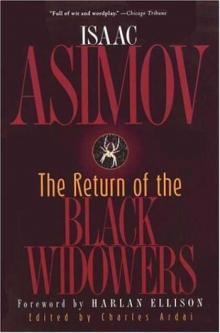 The Return of the Black Widowers
The Return of the Black Widowers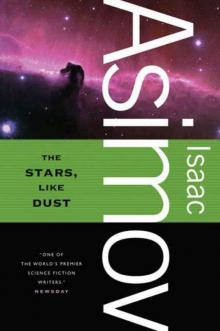 The Stars, Like Dust
The Stars, Like Dust Foundation
Foundation David Starr Space Ranger
David Starr Space Ranger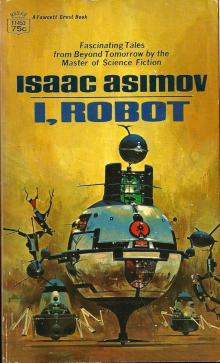 I, Robot
I, Robot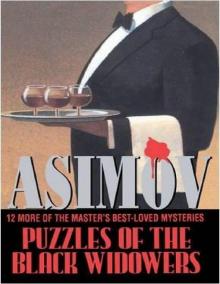 Puzzles of the Black Widowers
Puzzles of the Black Widowers Casebook of the Black Widowers
Casebook of the Black Widowers The Ugly Little Boy
The Ugly Little Boy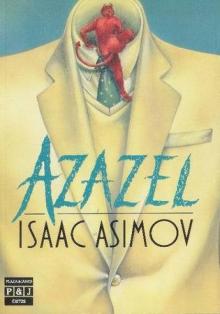 Azazel
Azazel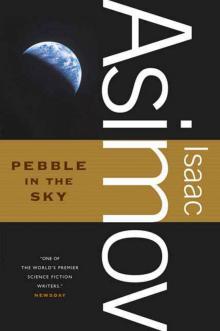 Pebble in the Sky
Pebble in the Sky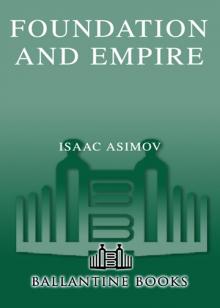 Foundation and Empire
Foundation and Empire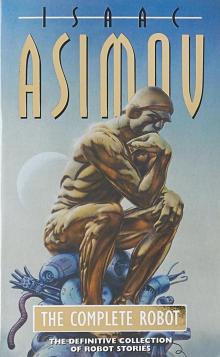 The Complete Robot
The Complete Robot Fantastic Voyage
Fantastic Voyage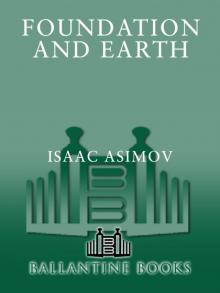 Foundation and Earth
Foundation and Earth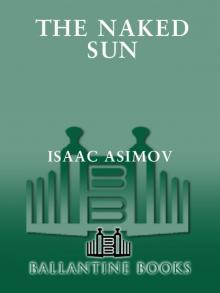 The Naked Sun
The Naked Sun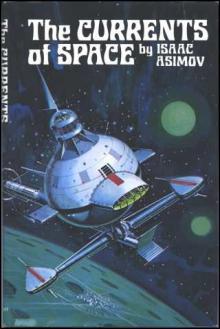 The Currents of Space
The Currents of Space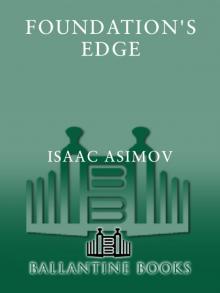 Foundation's Edge
Foundation's Edge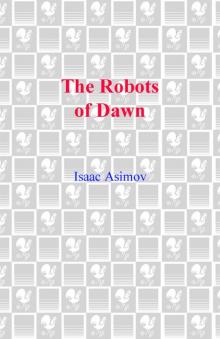 The Robots of Dawn
The Robots of Dawn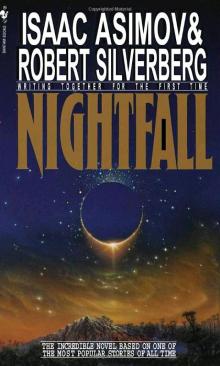 Nightfall
Nightfall The Caves of Steel
The Caves of Steel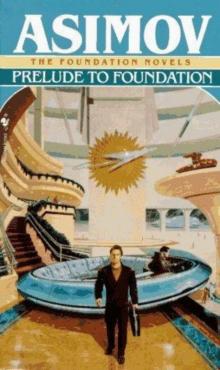 Prelude to Foundation
Prelude to Foundation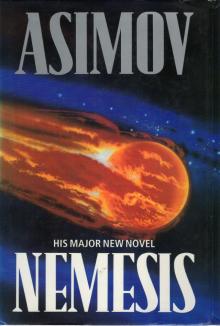 Nemesis
Nemesis Robot Dreams
Robot Dreams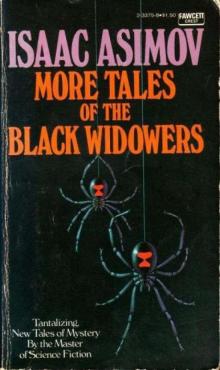 More Tales of the Black Widowers
More Tales of the Black Widowers The Complete Stories
The Complete Stories Robot Visions
Robot Visions Lucky Starr And The Moons of Jupiter
Lucky Starr And The Moons of Jupiter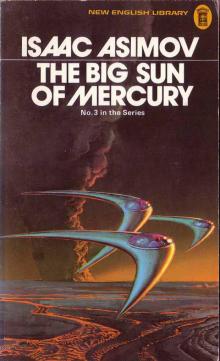 Lucky Starr and the Big Sun of Mercury
Lucky Starr and the Big Sun of Mercury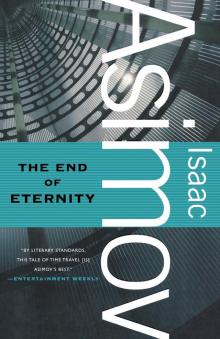 The End of Eternity
The End of Eternity The Bicentennial Man and Other Stories
The Bicentennial Man and Other Stories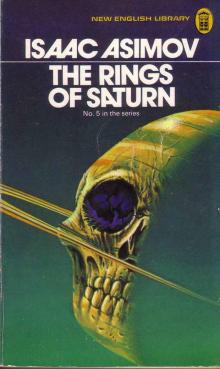 Lucky Starr And The Rings Of Saturn
Lucky Starr And The Rings Of Saturn Buy Jupiter and Other Stories
Buy Jupiter and Other Stories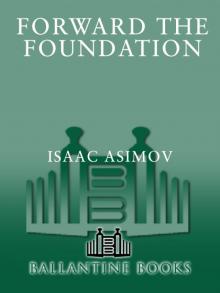 Forward the Foundation
Forward the Foundation Lucky Starr and the Oceans of Venus
Lucky Starr and the Oceans of Venus The Positronic Man
The Positronic Man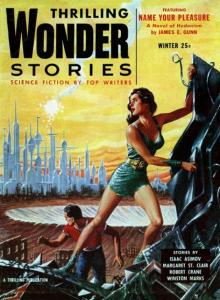 The Portable Star
The Portable Star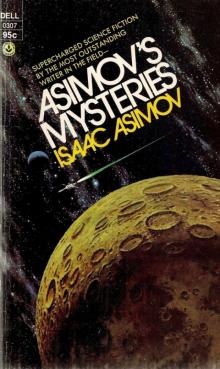 Asimovs Mysteries
Asimovs Mysteries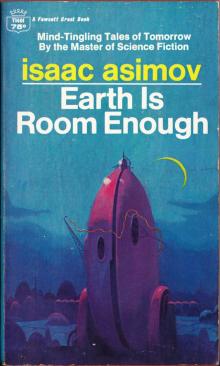 Earth Is Room Enough
Earth Is Room Enough The Gods Themselves
The Gods Themselves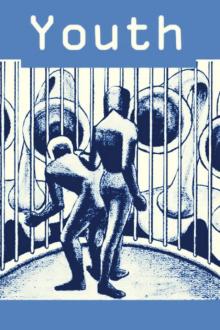 Youth
Youth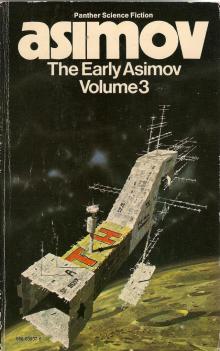 The Early Asimov Volume 3
The Early Asimov Volume 3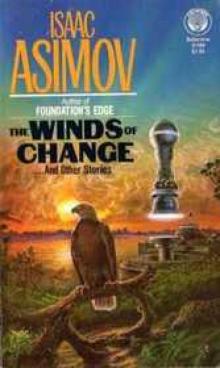 The Winds of Change and Other Stories
The Winds of Change and Other Stories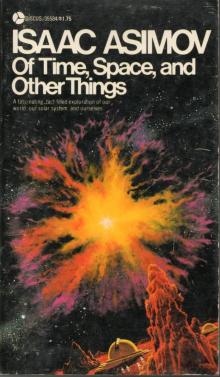 Of Time, Space, and Other Things
Of Time, Space, and Other Things Nine Tomorrows
Nine Tomorrows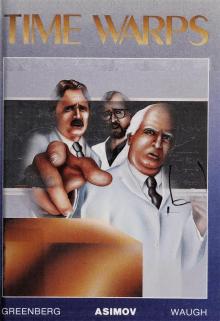 Time Warps
Time Warps Robots and Empire
Robots and Empire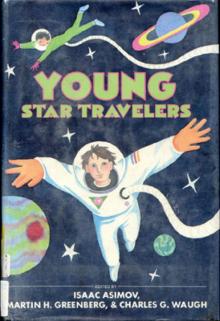 Young Star Travelers
Young Star Travelers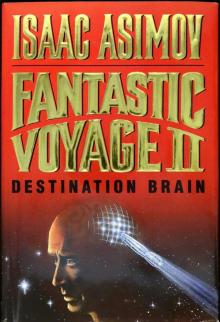 Fantastic Voyage II: Destination Brain
Fantastic Voyage II: Destination Brain Second Foundation
Second Foundation The Rest of the Robots
The Rest of the Robots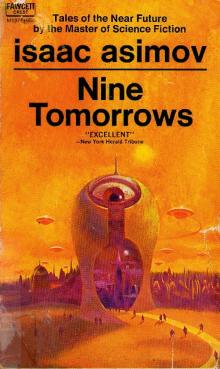 NINE TOMORROWS Tales of the Near Future
NINE TOMORROWS Tales of the Near Future Daneel Olivaw 1 - The Caves of Steel
Daneel Olivaw 1 - The Caves of Steel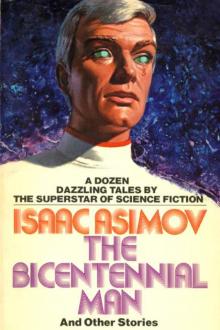 THE BICENTENNIAL MAN
THE BICENTENNIAL MAN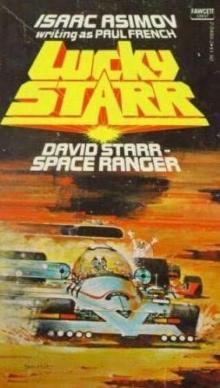 David Starr Space Ranger (lucky starr)
David Starr Space Ranger (lucky starr)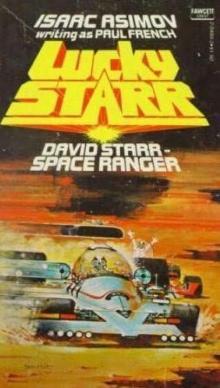 David Starr Space Ranger (ls)
David Starr Space Ranger (ls)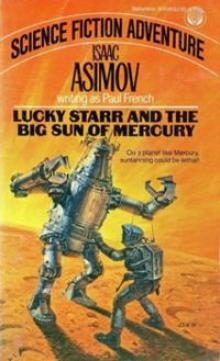 Lucky Starr And The Big Sun Of Mercury ls-4
Lucky Starr And The Big Sun Of Mercury ls-4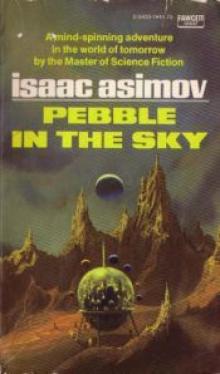 Pebble In The Sky te-1
Pebble In The Sky te-1 Asimov’s Future History Volume 9
Asimov’s Future History Volume 9 Gold: The Final Science Fiction Collection
Gold: The Final Science Fiction Collection Foundation and Earth f-7
Foundation and Earth f-7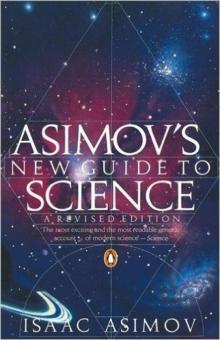 Asimov's New Guide to Science
Asimov's New Guide to Science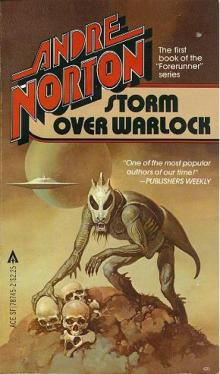 STORM OVER WARLOCK
STORM OVER WARLOCK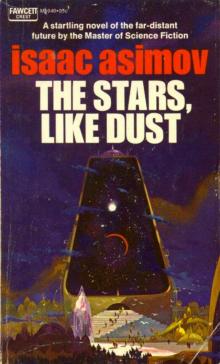 Stars, Like Dust
Stars, Like Dust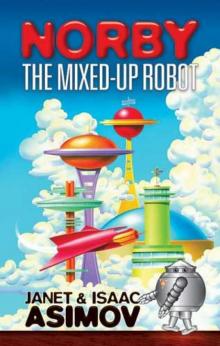 Norby The Mixed-Up Robot
Norby The Mixed-Up Robot Found!
Found! Asimov’s Future History Volume 11
Asimov’s Future History Volume 11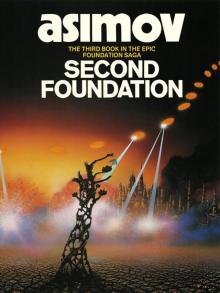 Second Foundation f-5
Second Foundation f-5 Asimov’s Future History Volume 15
Asimov’s Future History Volume 15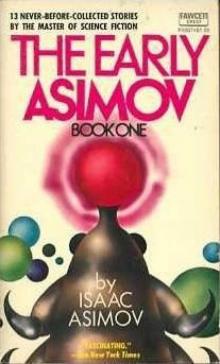 The Early Asimov. Volume 1
The Early Asimov. Volume 1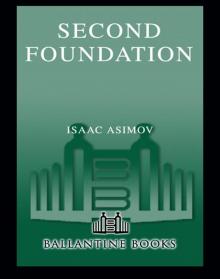 Secound Foundation
Secound Foundation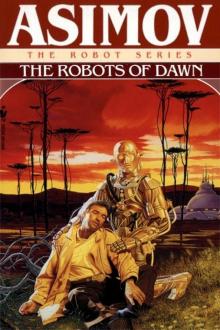 Daneel Olivaw 3 - The Robots of Dawn
Daneel Olivaw 3 - The Robots of Dawn Asimov’s Future History Volume 6
Asimov’s Future History Volume 6 The Early Asimov. Volume 2
The Early Asimov. Volume 2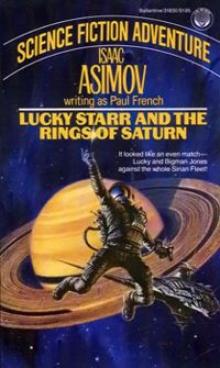 Lucky Starr And The Rings Of Saturn ls-6
Lucky Starr And The Rings Of Saturn ls-6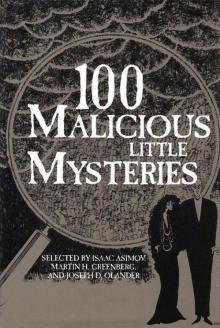 100 Malicious Little Mysteries
100 Malicious Little Mysteries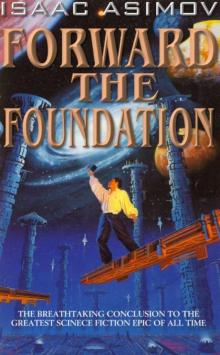 Forward the Foundation f-2
Forward the Foundation f-2 I.Asimov: A Memoir
I.Asimov: A Memoir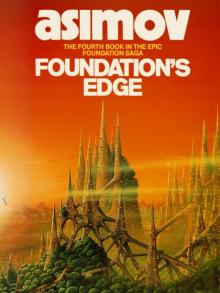 Foundation's Edge f-6
Foundation's Edge f-6 Lucky Starr and the Pirates of the Asteroids ls-2
Lucky Starr and the Pirates of the Asteroids ls-2 Robot City 1 & 2
Robot City 1 & 2 The Fourth Science Fiction Megapack
The Fourth Science Fiction Megapack Asimov’s Future History Volume 16
Asimov’s Future History Volume 16 The Dim Rumble
The Dim Rumble Asimov's Future History Volume 3
Asimov's Future History Volume 3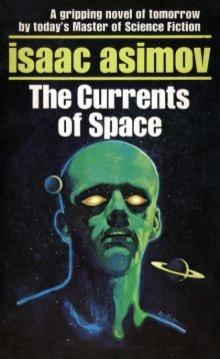 The Currents Of Space te-3
The Currents Of Space te-3 Asimov’s Guide To Shakespear. Volume 1
Asimov’s Guide To Shakespear. Volume 1 Asimov’s Future History Volume 13
Asimov’s Future History Volume 13 Asimov’s Future History Volume 12
Asimov’s Future History Volume 12 The Secret Sense
The Secret Sense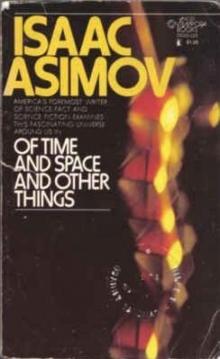 Of Time and Space and Other Things
Of Time and Space and Other Things Norby tnc-2
Norby tnc-2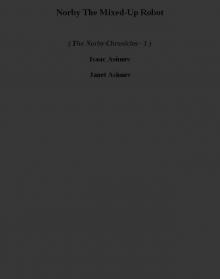 Norby The Mixed-Up Robot tnc-1
Norby The Mixed-Up Robot tnc-1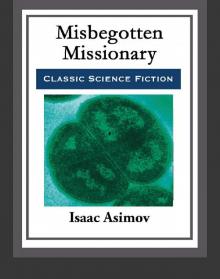 Misbegotten Missionary
Misbegotten Missionary Asimov’s Future History Volume 19
Asimov’s Future History Volume 19 Fantastic Voyage II: Destination Brain fv-2
Fantastic Voyage II: Destination Brain fv-2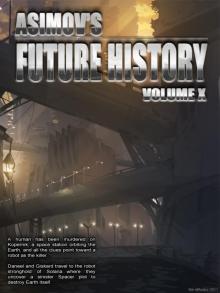 Asimov’s Future History Volume 10
Asimov’s Future History Volume 10 Asimov's Future History Volume 2
Asimov's Future History Volume 2 Feeling of Power
Feeling of Power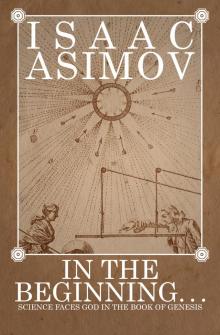 In the Beginning
In the Beginning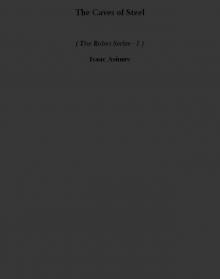 The Caves of Steel trs-1
The Caves of Steel trs-1 Asimov's Future History Vol 2
Asimov's Future History Vol 2 Caliban c-1
Caliban c-1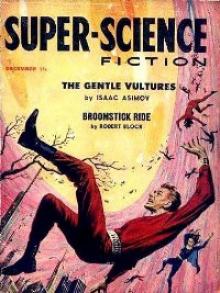 The Gentle Vultures
The Gentle Vultures Utopia c-3
Utopia c-3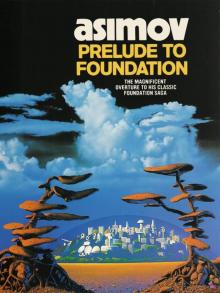 Prelude to Foundation f-1
Prelude to Foundation f-1 Short Stories Vol.1
Short Stories Vol.1 Asimov’s Future History Volume 8
Asimov’s Future History Volume 8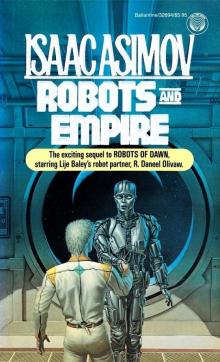 Daneel Olivaw 4 - Robots and Empire
Daneel Olivaw 4 - Robots and Empire Lucky Starr The And The Moons of Jupiter ls-5
Lucky Starr The And The Moons of Jupiter ls-5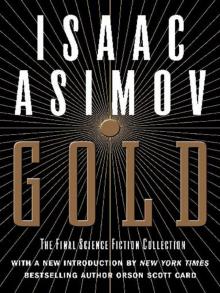 Gold
Gold Asimov’s Future History Volume 4
Asimov’s Future History Volume 4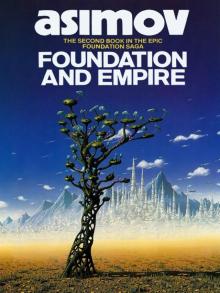 Foundation and Empire f-4
Foundation and Empire f-4 Potential
Potential Asimov’s Future History Volume 14
Asimov’s Future History Volume 14 Asimov’s Future History Volume 7
Asimov’s Future History Volume 7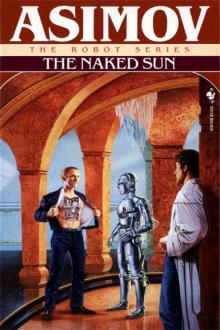 Daneel Olivaw 2 - The Naked Sun
Daneel Olivaw 2 - The Naked Sun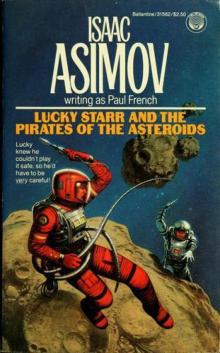 Lucky Starr and the Pirates of the Asteroids
Lucky Starr and the Pirates of the Asteroids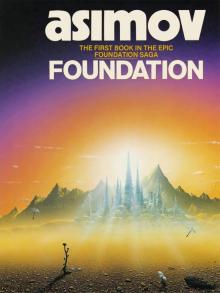 Foundation f-3
Foundation f-3 All the Troubles of the World
All the Troubles of the World Cleon the Emperor
Cleon the Emperor Asimov's Future History Volume 5
Asimov's Future History Volume 5 Asimov’s Future History Volume 20
Asimov’s Future History Volume 20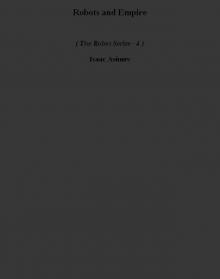 Robots and Empire trs-4
Robots and Empire trs-4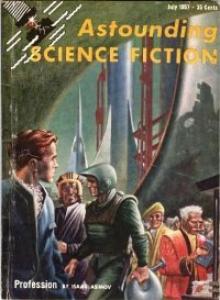 Profession
Profession It's Been a Good Life
It's Been a Good Life The Robots of Dawn trs-3
The Robots of Dawn trs-3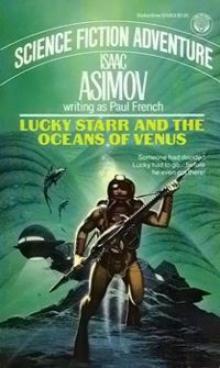 Lucky Starr And The Oceanf Of Venus ls-3
Lucky Starr And The Oceanf Of Venus ls-3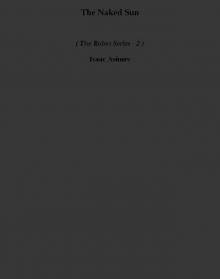 The Naked Sun trs-2
The Naked Sun trs-2 Asimov's Future History Volume 1
Asimov's Future History Volume 1